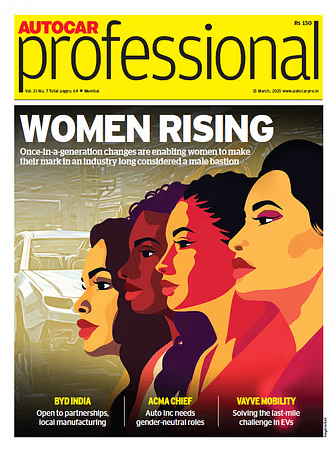Toyota to debut three new concept cars at Tokyo Motor Show
While some of the vehicles slated to go on display represent the development and commercialization of groundbreaking new technologies, others seek to explore and strengthen the emotional bond between car and driver.
Toyota will present its vision for the future of mobility at this year's Tokyo Motor Show, where three very different concept cars will make their global debuts. While some of the vehicles slated to go on display represent the development and commercialization of groundbreaking new technologies, others seek to explore and strengthen the emotional bond between car and driver.
The company’s commitment to advanced powertrain technology will be represented by three models: the all-new Prius, the Toyota C-HR Concept, a compact hybrid crossover, and the Toyota FCV Plus, a fuel cell concept that embodies Toyota's vision of a hydrogen-based society.
The main vehicles on display comprise:
- The all-new Prius (Japan debut), the bold next generation of Toyota's hybrid pioneer.
- C-HR Concept (Japan debut), a compact hybrid crossover set to go into production soon.
- The S-FR (global debut), a lightweight, sporty concept offering a fun, responsive driving experience.
- The FCV Plus (global debut), a concept vehicle created with a future hydrogen-based society in mind.
- The Kikai (global debut), a concept that encourages appreciation of the beauty of machines.
S-FR
The S-FR is a concept vehicle developed on the lines of Toyota's fun-to-drive lightweight sports cars. Pitched as an entry-level model, the new concept emphasizes responsiveness, and aims to make a whole new generation fall in love with driving. Benefiting from the unique advantages of a lightweight sports car, the concept offers smooth, responsive and direct handling that gives a real sense of communication between car and driver―one key benefit of the FR (front engine/rear drive) format. The full-fledged FR layout gives the engine a front midship location. Toyota says optimal weight distribution and independent suspension make for outstanding cornering performance while a six-speed manual transmission offers smooth acceleration, adding to the car's fun, responsive drive.
FCV Plus
Compressed hydrogen has a higher energy density than electricity, can be generated from a wide range of raw materials, and is easy to store, making it a promising future energy source. Toyota envisages a sustainable society in which hydrogen energy is in widespread use ― a society embodied by this concept vehicle.
Clean generation of hydrogen from a wide range of primary energy sources will make local, self-sufficient power generation a global reality, and fuel cell vehicles will take on a new role as power sources within their communities. Toyota's aim is to add an all-new sense of purpose to the automobile by turning fuel cell vehicles from eco-cars into energy-cars.
In addition to the vehicle's own hydrogen tank, the car can also generate electricity directly from hydrogen stored outside the vehicle. The vehicle can thus be transformed into a stable source of electric power for use at home or away.
When the car is not being used as a means of transport, it shares its power generation capabilities with communities as part of the local infrastructure.
The car's fuel cell stack can be reused as an electricity generating device, transcending the traditional functions of cars. Put to versatile uses around the world, these stacks could contribute significantly to local communities.
Kikai
This concept takes the machinery, normally hidden beneath the vehicle body, and makes an open display of its beauty. Directly expressed in this way, the vehicle's inner workings become part of the exterior. In addition to the carefully designed form, continued into details including the fuel tank, reserve tank, and exhaust pipes, the analog-style meters and switches offer an engaging dialog with the machinery.
The small window at the driver's feet is another distinctive aspect of this car's structure, communicating the movements of the tyres and suspension and the rush of speed along the road surface. Through the windshield, the movements of the upper control arm are also visible. This provides a novel driving sensation in which the machinery that supports the operations of cruising, turning, and stopping in ordinary everyday driving can be directly perceived with the senses.
The adoption of a central driver seat, which places the driver at the heart of the car, gives a more instinctive sensory connection with the vehicle. The optimal spacing between the three passenger seats achieved by their triangular layout creates a congenial in-cabin communication space. The expansive side window that reaches up to the roof delivers full enjoyment in urban and natural landscapes alike.
RELATED ARTICLES
US tariffs will hurt both automakers and US manufacturing: ACEA
European Automobile Manufacturers’ Association says that the EU and the US must engage in dialogue to find an immediate ...
Trump levies 25% tariff on all cars imported to US
President Donald Trump claims new levy on all cars and car parts shipped into the country will create "tremendous growth...
Hyundai opens its third factory in the US: Metaplant America
Hyundai Motor Group Metaplant America's vehicle assembly and battery plant is the key pillar of the Hyundai Motor Group’...






 By Autocar Professional Bureau
By Autocar Professional Bureau
 08 Oct 2015
08 Oct 2015
 4066 Views
4066 Views


















